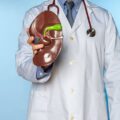Comment:
Non-alcoholic fatty liver disease (NAFLD) is estimated to affect 25% of the world’s adult population. In 20% of these patients, NAFLD further develops into non-alcoholic steatohepatitis (NASH), which itself represents a leading cause of progression to liver cirrhosis and hepatocellular carcinoma. Although a strong correlation between NAFLD and lifestyle interventions (physical exercise and improved nutrition) has been extensively documented, no pharmacologic therapies yet exist for the treatment of NAFLD and NASH.
The aim of this article was to highlight and discuss putative targets for NASH therapies currently undergoing development.
Key learnings:
Novel promising targets for NASH therapies include peroxisome proliferator-activated receptors (PPARs), thyroid hormone receptor β (THRβ), and fibroblast growth factor (FGF). Lanifibranor is one example of a pan-PPAR agonist which has demonstrated encouraging results in a recent phase IIb (NATIVE) study, with 55% of participants achieving a 2-point reduction in component A of the Steatosis, Activity, Fibrosis (SAF) scoring system, versus 33% in the placebo group. Although these targets represent promising bases for novel therapies, the complexity of NASH’s pathophysiology suggests that personalised approaches to treatment may be necessary to achieve desired NASH-associated endpoints.


